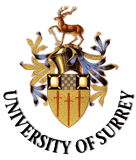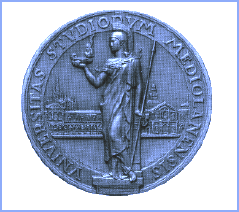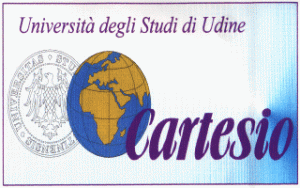IMAGES : Improving Agri-Environmental Policies : a Simulation Approach to the Role of the Cognitive Properties of Farmers and Institutions
Project FAIR3 CT96-2092 (Beginning date : 1st March 1997 – completion date : 31st December 2000)
Documents to download
General
- Images Literature review » Social and informational networks of farmers « , Sarah Skerratt, sept 1998, Royal Agricultural College.
- Final report, »Improving Agri-environmental Policies : a simulation approach to the cognitive properties of farmers and institutions », FAIR3 CT 2092, version 2 oct 2001, G. Deffuant, Project coodinator, Cemagref (pdf format 2918ko).
Software
- ImagesModel.exe / Win 32 / 5.0Mb / Self-extracting archive. Copy this file into the directory where you want to install the software, then double-click on it. You should have a java2-compatible virtual machine installed on your system in order to run the model.
- ImagesModelWithJRE.exe / Win 32 / 10.2Mb / Self-extracting archive, containing also Sun’s Java Runtime Environment. Copy this file into the directory where you want to install the softwre, then double-click on it. When extracting is finished, the software will start automatically. When installed, you can run the program by double-clicking onto the ImagesModel.bat file.
- ImagesModel.tar.gz ; ImagesModel.zip / UNIX and Other/ 4.6Mb ; 5.0Mb /Copy this file into the directory where you want to install the software. Type « tar -xzf ImagesModel.tar.gz » to extract files from the archive. You should have a java2-compatible virtual machine installed on your system in order to run the model. To run the model, go to the directory where you extracted files, then type « java -classpath . Start ».
Data collection and analysis
- Result phase 1 farmers interviews
- Isère study zone (France) » Attitudes des agriculteurs a l’égard des contrats agri-environnementaux de réduction d’intrants pour la protection des eaux en Isère « , S. Labonne, L. Dobremez, E. Perret, M. Baudrand, M.H. Selva, G. Levast, nov 1998, Cemagref UR AMM (pdf format, in French).
- Ariège study zone (France) » Enquêtes aupros d’exploitations agricoles « , L. Dobremez, S. Labonne, E. Perret, fev 1999, Cemagref UR AMM (pdf format, in French).
- Haute vallée de l’Allier study zone (france) » Opération locale de Haute vallée de l’Allier : protection des paysages « , G. Amon, Cemagref (pdf format, in French).
- Auvergne study zone (France) » Analyse de contenu des enquêtes effectuées sur la mesure « conversion à l’agriculture biologique » en Auvergne « . G. Amon, Cemagref (pdf format, in French).
- UK study zones » Phase 1 UK Farm Survey – Selected initial findings « . S. Skerratt, Royal Agricultural College (pdf format, in English).
- Pavia study zone (Italy) » Applicazione delle misure agro-ambientali nell’oltrepo’pavese » S. Geromin, F.Mazzetto, University of Milan (pdf format 893ko).
- Comunita Collinare study zone (Italy) » Primi risultati ottenibili dalle interviste agli imprenditori agricuoli » university of Udine (pdf format 282ko, in Italian).
- Motivation evaluation
- Isère study zone (France) » Motivations des agriculteurs pour signer ou refuser un contrat agri-environnemental « , L. Dobremez, E. Perret, S. Labonne, G. Amon, J.P. Bousset, juin 2000 Cemagref (pdf format 1125ko, in French).
- Ariège study zone (France) » Motivations des agriculteurs pour signer ou refuser un contrat agri-environnemental : application à la zone d’étude Ariège « , E. Perret, S. Labonne, L.Dobremez, juillet 2000 (pdf format 885ko, in French).
- UK study zone » Analysis of farmer’s motivations from phase 1 Survey Data « , Royal Agricultural College (pdf format 1545ko, in English).
- Pavia study zone (Italy) « Motivazion degli agricoltori per adottare o rifiutare una misura agro-ambientale « , University of Milan (pdf format 396ko, in Italian).
- Comunita Collinare study zone (Italy) Evaluation of farmers motivations from PH1 questionnaire : set of motivations and rules adopted for their evaluation in Italy and results « , University of Udine (pdf format 1977ko, in Italian).
- Results of second farmer interviews
- Isère study zone (France) » Enquêtes phase 2 exploitants agricoles « , S. Labonne, L. Dobremez, sept 2000, Cemagref (pdf format 2178ko, in French).
- Sampling and initial resutls, Royal Agricultural College (pdf format 498ko, in English).
- UK study zone : Social & informal networks within the two case study areas ; Influence of farmers’social & informational networks on their esa-adoption desion-making ; Analysis of motivations (pdf format in English).
- Pavia study zone (Italy) » Analisi dei risultati della seconda fase di interviste effettuate presso 20 agricoltori della provincia di Pavia « , University of Milan(pdf format 412ko, in Italian).
- Comunita collinare stydy zone (Italy) » I risultati della seconda fase delle interviste agli agricoltori nella Comunity Collinare del Friuli « , A. Fenaroli, L. Piani, M. Sigura, University of Udine (pdf format 369ko, in Italian).
- Results of phase 2 of the institutional actor interviews
-
- Isère & Ariège study zone (France) : » Résultats des enquêtes intitutionnelles en Isère et Ariège « , Cemagref (pdf format 1056ko, in French).
- Haute vallée de l’Allier study zone (France) Cemagref (pdf format 1380ko, in French).
- UK study zones : UK Institutional questionnaire results, annex to third year report, 2000, Royal Agricultural College (pdf format 892ko, In English).
- Pavia study zone (Italy) : « Analisi dei questionari effettuati presso gli attori istituzionali : primi risultati » University of Milan (pdf format 214ko, in Italian).
- Comunita Collinare study zone (Italy) » Risultati del questionario agli « institutional actors » – Friuli Venezia Giulia « , L. Piani, C. Bandera, University of Udine (pdf format 288ko, in Italian).
Models
- ENS : cellular automata models
- » Dynamical aspects in the adoption of agri-environmental measures » G. Weisbuch and G. Boudjema, Advances in Complex Systems, 2:11-36, 1999 (pdf format 314ko).
- Social Percolation Models S. Solomon, G. Weisbuch, L. de Arcangelis , N. Jan, D. Stauffer , Physica A 277, 23, 2000 (pdf format 221ko).
- Environment and Institutions: a complex dynamical systems approach G. Weisbuch , Ecological Economics, 34, 381-391, 2000 (pdf format 195ko).
- Hits and Flops Dynamics G. Weisbuch and D. Stauffer , Physica A, 287, 3-4, 563-576, 2000 (pdf format 206ko).
- Self Organized Percolation and Critical Sales Fluctuations G. Weisbuch and S. Solomon, Int. Jour. Mod. Phys. C, Vol 11, No. 6, 1263-1272, 2000 (pdf format 220ko).
- Interacting agents and Continuous Opinions Dynamics G. Weisbuch, G. Deffuant, F. Amblard and JP. Nadal, preprint 2001 (pdf format 149ko).
- University of Surrey : cellular automata and social influence
- » Modelling the Adoption of AEMs Using Decision Plan Nets « , E. Chattoe and N.Gilbert, May 1998 (pdf format 85ko).
- » A Simulation Specification for Innovation Diffusion Through Social Networks with Boundedly Rational Agents « , E. Chattoe and N.Gilbert (pdf format 103ko).
- » Specification of University of Surrey Simulation Version 1.1 and Proposed Developments for Version 1.2 « , E. Chattoe and N. Gilbert (pdf format 99ko).
- Cemagref (DFCF) : knowledge based model of the decision process
J.P. Bousset. Load the document (pdf format 396ko, in French).
- Agent based innovation diffusion models (multi-patners collaboration)
- « Agent based simulation of decision process mixing rational reasoning and influences from socio-informal networks : case studies of agri-environmental measures adoptin by farmers « G. Deffuant, S. Skerratt, F. Amblard, N. Ferrand, E. Chattoe, N. Gilbert, G. Weisbuch.
- Rapport d’avancement octobre 2000 du sous-projet « Simulation de l’évolution des conversions à l’agriculture biologique dans le département de l’allier entre 1994 et 1999 par un modèle multi-agents » , G. Deffuant, F. Amblard, S. Huet, S. Bernard, N. Ferrand, J.P. Bousset, G. Amon, J.Henriot, N. Gilbert, G. Weisbuch.
- Modèle Allier « Calcul de l’impact économique de la conversion à l’agriculture biologique. », S. Huet, G. Deffuant, mars 2001, Cemagref (pdf format 1200ko, in french).
- » Mixing beliefs among interacting agents. « G. Deffuant, D. Neau, F. Amblard, G. Weisbuch, Advances in Complex Systems 3(1):87-98, 2000. (pdf format 1117ko).
Objectives : modelling agri-environmental measure adoption
General objective
The general objective of the project is to provide new directions for improving the definition and implementation of agri-environmental policies. The study is focused on the main current agri-environment policies and their ecological and socio-economical impacts. The cognitive processes of the actors involved (farmers, land owners, institutions) is modelled and implemented in computer simulations. These simulations aim at providing a new understanding of the diffusion of environmentally friendly behaviour and will be used to study the impact of potential changes in policy definition.
Modelling agri-environmental measure adoption
Economic or biophysical models begin to be more and more commonly used tools for the analysis or the design of policies. This interest can easily be understood. Reliable models offer the possibility to experiment future scenarios of action, or to test hypothetical changes in the past, which help to understand what happened. They may be able to answer a large variety of questions (aggregate results, non aggregate results, focus on some variables, propose various statistics on results…).
The development of more complex policies (including optional aspects) and the increased need to take into account social as well as economic impacts of policies, lead the policy makers to be interested by a new type of models : social models in which elaborated representation of agent behaviours is available.
The agri-environmental measures (AEM) are examples of policies in which understanding the behaviour of farmers is important : farmers are free to choose to adopt them or not. A simple economic calculation is not the only criterion explaining farmers behaviour in the case of AEM adoption. Being paid by public finances for biodiversity protection or landscape maintenance is a new situation for farmers. This new behaviour may imply a change of perspective, a different view of the job of farming, which needs time. One can therefore expect the influence of other farmers and of more or less institutionalised contacts to play a part in farmers decision process. Therefore, models for the analysis or the design of such policies must integrate farmer behaviour as an explicit part, including his interactions with other farmers and institutions.
The objective of the IMAGES project is to elaborate such a model and to test it on a variety of study zones in Europe. The aim of the model is to bring a better understanding of the adoption diffusion in these study zones, and if possible to extract more general results that could be useful for the design of future AEMs.
Partners
| Organisation | Main contact | Address |
DFCF / AMGR / LISCCemagref France |
Guillaume Deffuant (co-ordinator) Tel : +33(0)4.73.44.06.14 Fax : +33(0)4 73.44.06.97 e-mail: Guillaume.Deffuant@inrae.fr |
BP 50085 63172 AUBIERE CEDEX France |

Dept. of Sociology University of Surrey UK |
Nigel Gilbert
Tel : +44/1483 259173 Fax : +44/1483 259551 |
Dept of Sociology
University of Surrey Guildford, GU2 5XH United Kingdom. |

Laboratoire de Physique Statistique Ecole Normale Sup�rieure France |
G�rard Weisbuch
Tel : +33/1 44 32 34 75 Fax : +33/1 44 32 34 33 |
24 rue Lhomond
F 75231 Paris Cedex 5 France |
 School of Rural Economy and Managment Royal Agricultural College UK |
Sarah Skerratt
Tel : +44/ 1285 652531 Fax : +44/ 1285642276 e-mail: sarah.skerratt@royalcol.ac.uk |
Cirencester GLOS.
GL7 6JS United Kingdom |

Istituto de Ingegneria Agraria University of Milano Italy |
Fabrizzio Mazzetto
Tel : +39/2 2367625 Fax : +39/2 26680322 |
University of Milan
via Celoria, 2 20133 Milan – Italy |

|
Massimo Lazari
Tel : +39/432 558659 Fax : +39/432 558603 |
via delle Scienze, 209 – Polo Scientifico 33100 – Udine
Italy |
Scientific Background : Rural sociology, innovation diffusion and multi-agent models
The AEMs studied in the project are designed under the 2078/92 regulation. They include a variety of objectives : biodiversity conservation, landscape improvement and maintenance, input reduction, conversion to organic farming. Moreover, the modelling work must face another source of diversity : the multi-disciplinary nature of the sources of the scientific background, which involves three main components:
- Rural economics and sociology bring an essential background about farmers behaviour, values, specific way of life. The economic utility and the specific constraints of different farming systems, although not the main focus of the project, cannot be ignored (see : Literature review for more information, To load the document (pdf format 276ko) ; see section 1.2 of this research in the final report).
- Innovation diffusion research, which studies how new ideas or behaviours are communicated in a social system. These researches begun in the thirties and studied the correlation between the adoption and several individual characteristics . More recently, these studies use the concepts coming from the sociology of networks, and focus on the influence of local interactions.(see section 1.3 of this research in the final report)
- Agent based modelling is a very general modelling approach, coming from computer science, which aims at modelling large models by the specification of distributed interacting, autonomous components. It is more and more commonly used to test various hypotheses in social sciences. Various options for modelling individual behaviour are investigated, from simple automata or standard economic utility maximisation to very elaborated models referring to researches in the psychology of decision making (see section 1.4 and 1.5 of this research in the final report).
The multi-disciplinary nature of the research is an important aspect of the project. This is one asset of models to offer the possibility to integrate different disciplinary views in the same coherence.